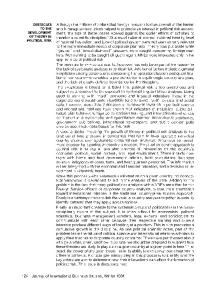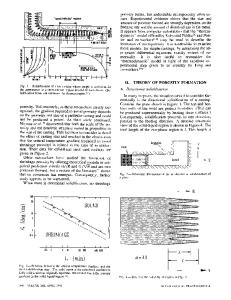Pair-state formation in a nanocrystal: a theoretical perspective
- PDF / 605,796 Bytes
- 6 Pages / 612 x 792 pts (letter) Page_size
- 113 Downloads / 358 Views
Pair-state formation in a nanocrystal: a theoretical perspective J. F. Suyvera,1 , R. Meesterb , A. Meijerinka and J. J. Kellya a)
Debye Institute, Physics and Chemistry of Condensed Matter, Utrecht University, P.O. Box 80.000, 3508 TA Utrecht, The Netherlands. b ) Division of Mathematics and Computer Science, Free University of Amsterdam, De Boelelaan 1081a, 1081 HV Amsterdam, The Netherlands.
ABSTRACT Simulations of dopant pair-state distributions are presented for zincblende nanocrystals with different radii and for different dopant fractions. The probability of finding at least one pair-state and the concentration of pair-states were calculated on the basis of a statistical average of 105 simulations per crystal size and dopant concentration. The distribution of nanocrystal lattice positions over the surface and the bulk of the crystal is computed. A mathematical description of the distributions, valid in any crystal lattice, is discussed. This removes the need for further simulations. INTRODUCTION An important difference between nanometer-sized and bulk materials is the much larger surface area of the former. For nanocrystalline semiconductors the electronic structure changes due to quantum-size effects as the particle size is varied [1]. An effect that has not been studied is the influence of the particle size on the formation of pairs of dopant (impurity) ions in nanometer-sized particles. The formation of these pairs can be important for the magnetic and optical properties [2–4]. For example, the luminescence lifetime of the Mn 2+ emission in ZnS:Mn2+ decreases and the emission shifts to longer wavelengths when Mn2+ pairs are formed [5, 6]. For studies on a single magnetic quantum dot containing one magnetic dopant ion it is also useful to determine the fraction of nanocrystals with one or more magnetic dopant ions [7]. For bulk crystals the probability for the formation of dopant pair-states can be analyzed analytically [8], but for quantum dots this is not possible. This is due to the fact that the coordination number (i.e. the number of nearest neighbours with the same valence) of ions at the surface is lower than that of ions in the bulk. The contribution of surface sites becomes increasingly important as the quantum dots decrease in size. As a result, for the same dopant concentration the fraction of pairs will be different for different particle sizes. This paper shows simulations to determine the probability of finding at least one pair-state in the nanocrystal, and the percentage of dopants that form a Corresponding author. Tel.: +31 − 30 − 253 2214; Fax: +31 − 30 − 253 2403; E-mail: [email protected] 1
Y6.8.1
pair-state as a function of both the particle size and the dopant fraction. In addition, the number of bulk and surface sites is determined as a function of particle size. Finally, a mathematical probabilistic theory is presented which yields a closed-form approximation of these probabilities, valid in any crystal structure. The results shown in this paper are based on random dopant di
Data Loading...










